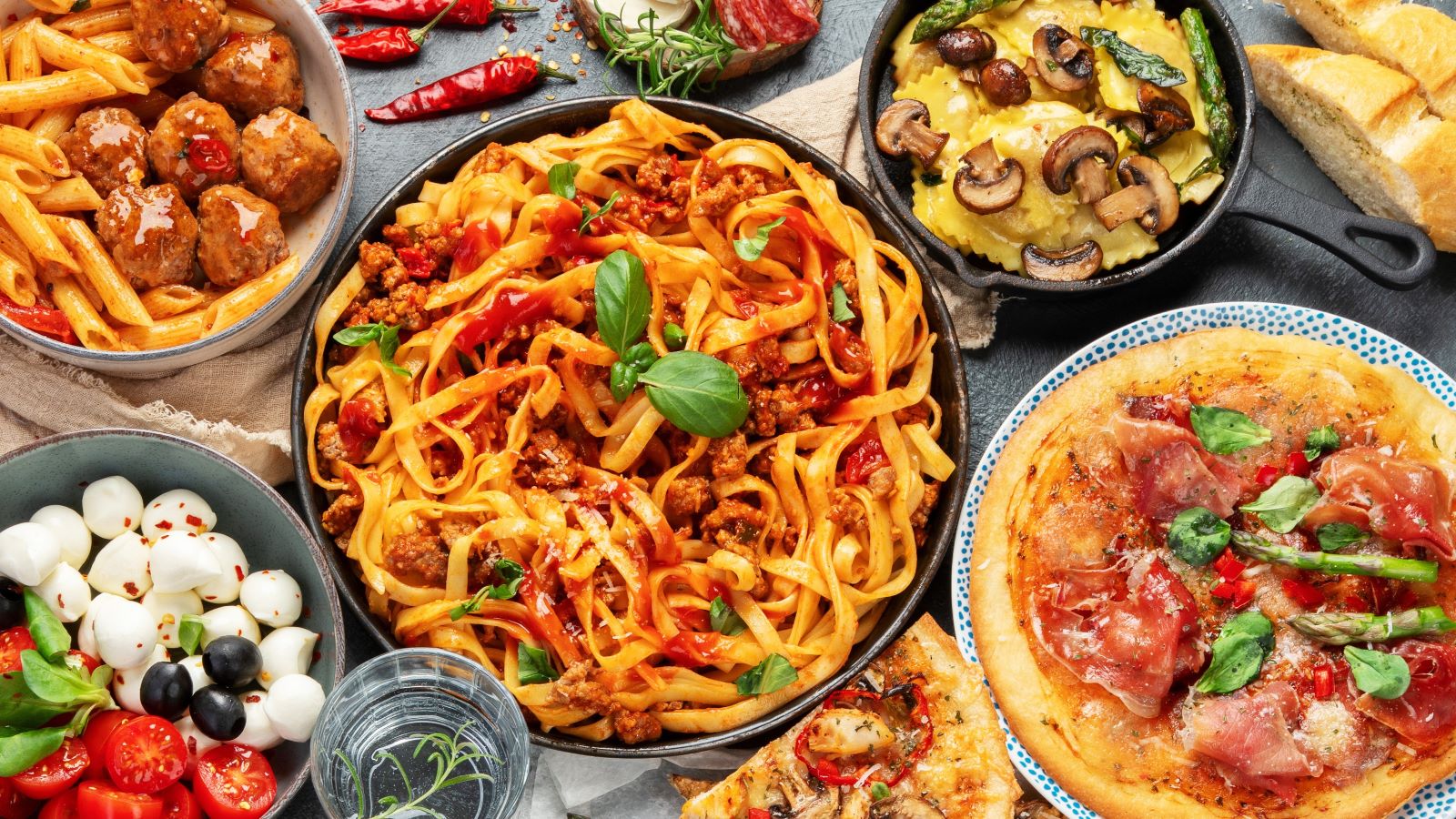<< Back
4 Ways to Eat Healthy at Italian Restaurants

April 08, 2024
If your go-to craving is pasta and breadsticks, you’re not alone. Italian food can really hit the spot — but it also has a reputation for being high in fat, carbs and sodium. So how do you maintain your diet while enjoying a meal at an Italian restaurant?
Here are a few tips from a nutritionist.
1. Appetizers.
They seem small, but appetizers can pack a punch when it comes to calories.
“With appetizers, it can be really easy to lose track of what you’ve eaten, especially if you’re sharing a few different appetizers with a group. That’s why making a great choice at this part of the meal can be really key,” says Samantha Nimmons, MS, a registered dietitian at Hartford HealthCare Medical Group.
Luckily, a lot of appetizers offer healthy options.
“In particular, seafood appetizers like mussels or calamari jump out at me as being very nutritious,” says Nimmons. “These contain important vitamins and minerals, and tend to be lower in fat and higher in protein.”
But traditional appetizers aren’t your only option ahead of a meal, either.
“If you don’t want to order a standard appetizer, many restaurants offer vegetables as appetizers or side dishes. They’ll typically use garlic, herbs or olive oil to add flavor and make the dish more satisfying.”
And don’t forget about soups and salads.
“These are typically great choices. Try a broth-based soup like a minestrone, to get a little extra fiber and protein compared to a cream-based soup,” says Nimmons. “In terms of salad, opt for a lighter dressing such as Italian, or even a small amount of olive oil.”
> Related: This One Rule Will Help You Avoid the Worst Restaurant Foods for Your Health
2. Entrees.
When it comes to entrees, preparation is key.
“Foods that are grilled, baked or steamed tend to make healthy options, while fried foods can hide more fat or calories,” says Nimmons.
In general, she points to grilled chicken or salmon.
“These are both excellent sources of protein, which will help keep you full and satisfied. Salmon is also loaded with omega-3 fatty acids, which help with cell function,” Nimmons adds.
And pasta is another great option.
“Pasta can be a surprisingly nutritious options, and there are plenty of ways to customize it. A dish with tomato sauce (as opposed to a cream sauce) can be more nutritious – these tend to have fewer calories and more vitamins. Or if you don’t want white pasta, some restaurants offer whole wheat or vegetable pasta instead,” she says.
Want some extra nutrients? Try adding a lean protein like grilled chicken or shrimp, or order an extra side of vegetables.
> Want more health news? Text StartHere to 85209 to sign up for text alerts
3. Desserts.
And now for the best part – desserts.
“A lot of people feel like they can’t enjoy something sweet after dinner, especially if they’re following a diet, and that’s just not true. There are plenty of healthy choices.”
Nimmons points to fruit sorbets, or other light options like biscotti or berries and cream.
“No matter where you are in your health journey, it’s important to enjoy yourself. Allowing yourself to have a small treat will make it easier to stay on track long term.”
4. Bonus tips.
Looking for more ways to enjoy a healthy meal when you’re eating out? Nimmons has your back.
“Look at the menu before you get there. Looking when you aren’t hungry can help you settle on a more nutritious meal,” she suggests.
And it’s important to keep an eye on the portion sizes, too.
“Restaurant portions can be quite large, especially when it comes to the pasta dishes. But don’t feel like you need to eat the whole thing right then – ask for a to-go box, and save some of your meal for later. When you check the fridge the next day, you’ll be glad you did!”